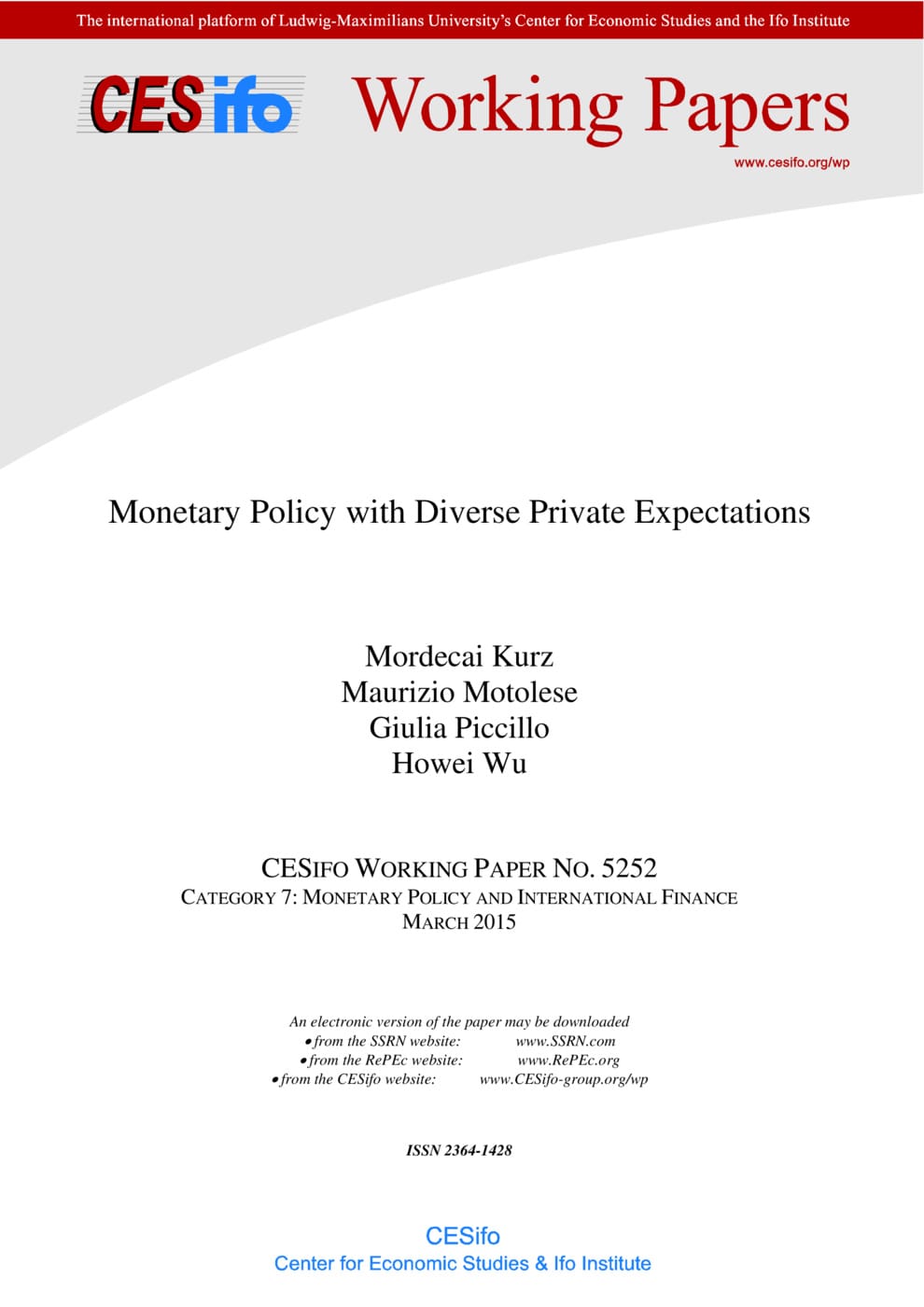Monetary Policy with Diverse Private Expectations
CESifo, Munich, 2015
CESifo Working Paper No. 5252

We study the impact of diverse beliefs on conduct of monetary policy. We use a New Keynesian Model solved with a quadratic approximation. Aggregation renders the belief distribution an aggregate state variable. Diverse expectations change standard results about a smooth trade-off between inflation and output volatility. Our results are: (i) The policy space contains a curve of singularity which is a collection of policy parameters that divides the space into two sub-regions. Trade-off between output and inflation volatilities exists within each region and some across regions. (ii) The singularity causes volatility of variables to be non monotone in policy parameters. (iii) When beliefs are diverse a central bank must also consider the volatility of individual consumption and the related volatility of financial markets. We show aggressive anti-inflation policy increases consumption volatility and aggressive output stabilization policy entails rising inflation volatility. Efficient central bank policy must therefore be moderate. (iv) Optimism about the future typically lowers aggregate output and increases inflation. This „stagflation“ effect is stronger the stickier prices are. Policy response is muted since the effects of higher inflation and lower output on interest rates partially cancel each other. Effective policy requires targeting exuberance directly or its effects in asset markets. Central banks already do so with short term interventions. (v) The observed high serial correlation in policy shocks contributes greatly to market volatility and we show that a reduction in persistence of central bank‘s deviations from a fixed rule will contribute to stability. (vi) Belief dispersion is measured by cross sectional standard deviation of individual beliefs. An increased belief diversity is found to make policy coordination harder and results in lower aggregate output and lower rate of inflation. Bank policy can lower belief dispersion by being more transparent
Monetary Policy and International Finance
Empirical and Theoretical Methods